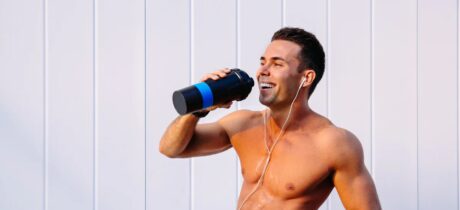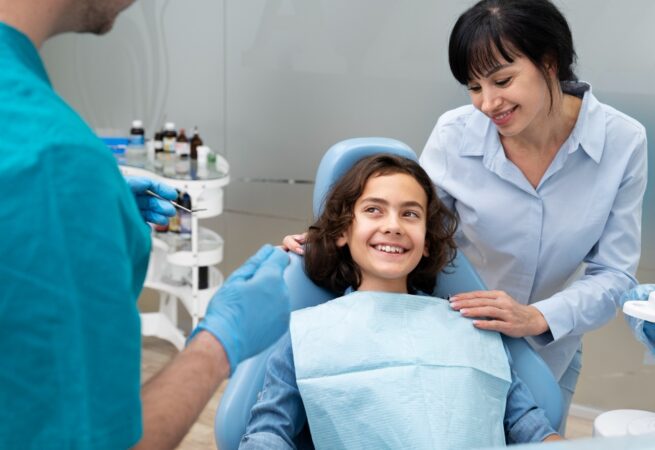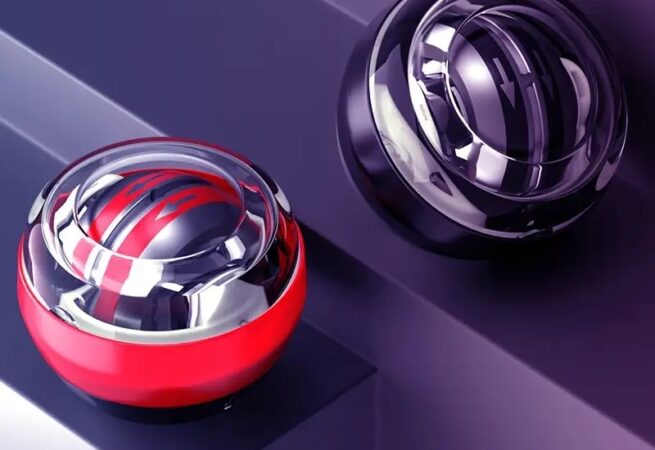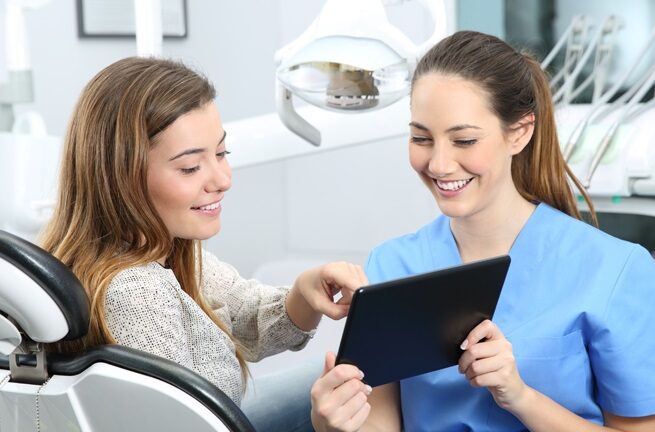
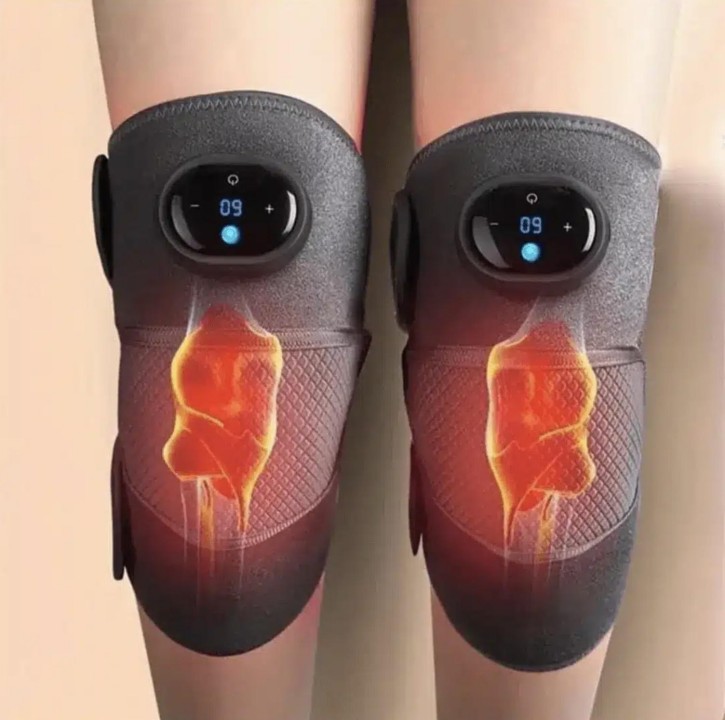
RejuvaKnee Review: Scam or Legit?
What is RejuvaKnee?
RejuvaKnee is a knee relief device that employs advanced technology to alleviate chronic knee pain. Its design focuses on delivering non-invasive treatment options that can be used at home or on the go. The device aims to improve overall knee health by targeting the root causes of pain rather than merely masking symptoms. Users have reported significant improvements in mobility and a reduction in discomfort after consistent use.How Does It Work?
RejuvaKnee operates using a unique “Triple Method” approach:- Heat Therapy: The device provides targeted heat to the knee area, which increases blood circulation and oxygen supply. This enhanced blood flow delivers essential nutrients to the joint, promoting healing and collagen production necessary for cartilage repair.
- Therapeutic Massage: The built-in massage function mimics the effects of manual therapy, relaxing tight muscles and tissues around the knee. This helps improve range of motion and reduces pain, facilitating better mobility.
- Dynamic Compression: The compression feature applies controlled pressure to the affected area, helping to manage swelling and inflammation while offering additional support to the joint.
How to Use RejuvaKnee
Using RejuvaKnee is straightforward:- Placement: Secure the device snugly around your knee, ensuring it fits comfortably without being too tight.
- Power On: Activate the device by pressing and holding the power button for three seconds.
- Adjust Settings: Utilize the touch screen interface to set your preferred heat level (ranging from 40°C to 60°C) and select a massage intensity from three available speeds.
- Treatment Duration: For optimal results, it is recommended to use RejuvaKnee for at least 15 minutes daily. Many users find benefit in performing two sessions per day.
- Charging: Ensure that the device is fully charged before its first use; charging typically takes 2-3 hours, providing 1-2 hours of usage time per charge.
What I Like About RejuvaKnee
- Effective Pain Relief: The heat and massage features provide immediate comfort, significantly reducing my knee pain after a long day at work.
- User-Friendly Design: The device is easy to use, with a straightforward interface that allows me to adjust settings without any hassle.
- Portability: I can easily take RejuvaKnee to work or use it at home, making it convenient to fit into my busy schedule.
- Customizable Settings: The ability to choose different heat levels and massage intensities means I can tailor my experience to what feels best for me.
- Durable Build: It feels sturdy and well-made, which gives me confidence that it will last through regular use.
What I Don’t Like About RejuvaKnee
- Charging Time: It takes a few hours to fully charge, which can be inconvenient if I forget to plug it in after my last use.
- Limited Battery Life: While it lasts for a decent amount of time, I sometimes wish it had a longer battery life for extended sessions.
- Initial Adjustment Period: The first few uses felt a bit awkward as I got used to the compression and heat; however, this quickly became comfortable.
Is RejuvaKnee Legit?
I genuinely believe that RejuvaKnee is a legitimate solution for knee pain based on my own positive experience. After struggling for months with discomfort that affected both my work and personal life, finding this device was like discovering a hidden gem. The combination of heat therapy and massage not only alleviates my pain but also promotes relaxation, which is essential after long hours on my feet. What sets RejuvaKnee apart is its thoughtful design and effectiveness. It’s not just another gadget; it’s clear that the creators put significant thought into addressing common issues faced by people like me. I’ve noticed improvements in my mobility and overall comfort levels since incorporating it into my routine. Moreover, the fact that I can use it at home or bring it to work makes it incredibly versatile. I appreciate that it’s not just a temporary fix; rather, it’s become an integral part of my self-care regimen. For anyone dealing with knee pain, I wholeheartedly recommend giving RejuvaKnee a try. It has genuinely changed how I manage my discomfort, allowing me to focus on my job without being constantly distracted by pain.Where to Buy RejuvaKnee?
When considering RejuvaKnee, it’s crucial to purchase from the official retail store. After years of struggling with knee pain and trying countless remedies, RejuvaKnee has finally brought me the relief I needed. Buying from the official store guarantees that you receive a genuine product along with exclusive promotions. My order was processed quickly, and the customer service team was incredibly responsive. With their 60-day money-back guarantee, I felt completely secure in my decision. Don’t take any chances—make your purchase from the official store for RejuvaKnee.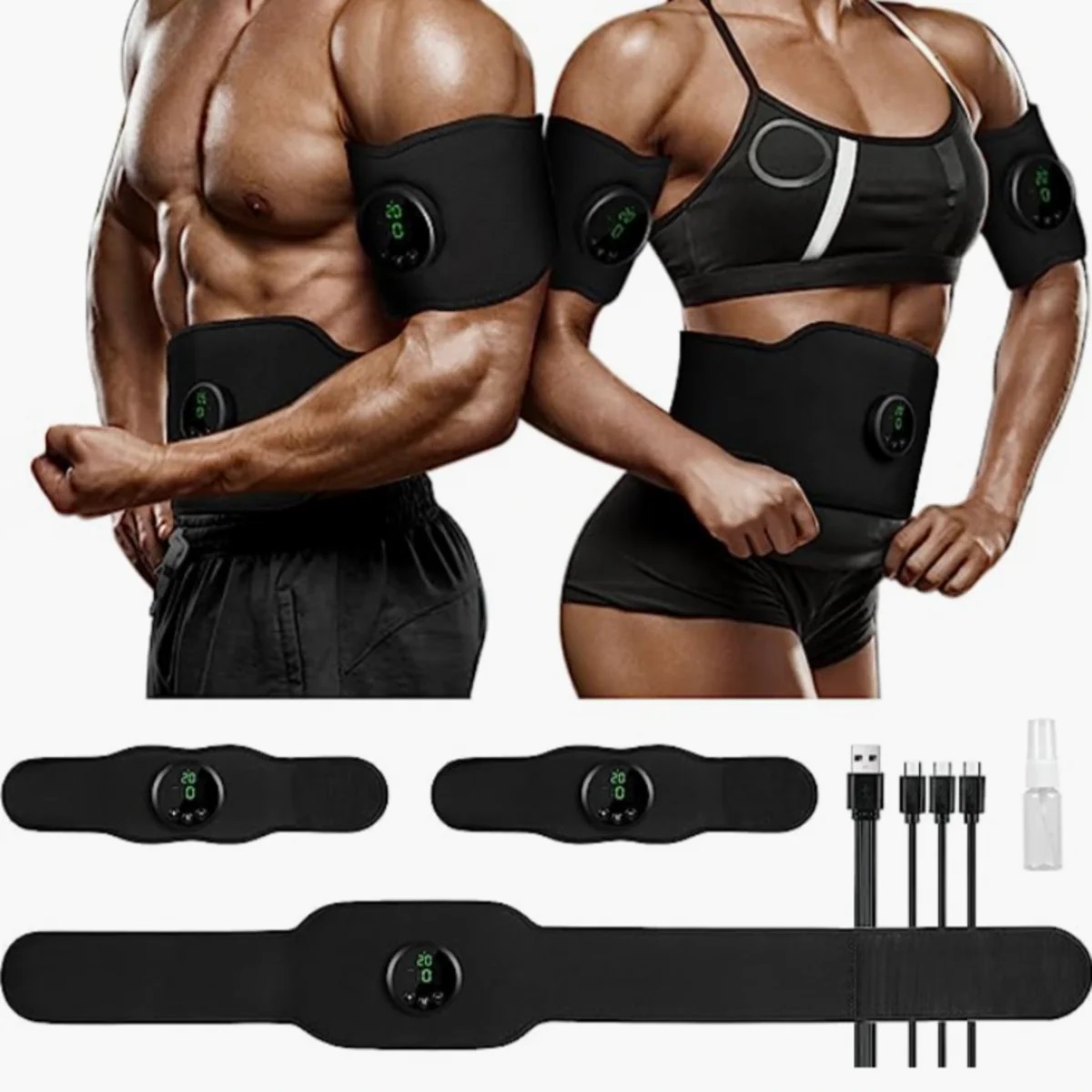
NextGen Abs Stimulator Reviews: It Really Works
As a dietitian always on the lookout for effective ways to enhance my fitness routine, I was intrigued when I came across the NextGen Abs Stimulator. Like many of my clients, I’ve been chasing that elusive six-pack, and I was curious to see if this device could help me achieve more defined abs without spending countless hours doing crunches. After incorporating the NextGen Abs Stimulator into my daily routine for several weeks, I’m excited to share my experience and insights with you.
The NextGen Abs Stimulator uses advanced Electrical Muscle Stimulation (EMS) technology, originally developed for NASA astronauts and elite athletes. This piqued my interest, as I’m always keen to try scientifically-backed fitness tools. The device promises to help tone and strengthen abdominal muscles through electrical impulses that contract the muscles, simulating a workout effect.
In this review, I’ll dive into what the NextGen Abs Stimulator is, how it works, and my personal experience using it. I’ll also share some tips on how to use it effectively based on my professional knowledge as a dietitian and my hands-on experience with the device.
What is NextGen Abs Stimulator?
The NextGen Abs Stimulator is an electronic muscle stimulation (EMS) device designed to help tone and strengthen abdominal muscles. It uses advanced Neuromuscular Electrical Stimulation technology to send electrical impulses that contract the muscles in your core area. The device claims to offer a convenient way to work your abs while going about your daily activities, potentially replacing or supplementing traditional ab exercises.

How Does It Work
The NextGen Abs Stimulator works by sending electrical pulses through gel pads placed on your abdominal muscles. These pulses stimulate the motor neurons, causing muscle contractions similar to those experienced during exercise. The device offers:
- 6 different training modes
- 10 intensity levels
- Up to 150 contractions per minute
The technology behind this device was originally developed for use by NASA astronauts, military special forces, and US Olympic teams. While it can help strengthen and tone muscles, it’s important to note that ab stimulators alone cannot burn fat or lead to significant weight loss.
How to Use NextGen Abs Stimulator
To use the NextGen Abs Stimulator effectively:
- Clean and dry your skin thoroughly. Do not apply lotions or oils.
- Attach the gel pads to the electrodes on the stimulator unit.
- Place the device on your abdominal muscles, ensuring the gel pads make firm contact with your skin.
- Turn on the device using the power button.
- Select your desired mode using the mode button.
- Adjust the intensity level using the plus (+) and minus (-) buttons.
- Start with a 10-minute session at a low intensity, gradually increasing duration and intensity as you become accustomed to the sensations.
- Use for up to 20 minutes per session, twice a day.
For best results, combine the use of NextGen Abs Stimulator with a healthy diet and regular exercise routine. While the device may help tone muscles, it should not be considered a replacement for a comprehensive fitness program.
What I Like About NextGen Abs Stimulator
- Convenience: I can use it while working at my desk or watching TV.
- Versatility: The 6 training modes and 10 intensity levels allow me to customize my sessions.
- Ease of use: It’s straightforward to set up and operate.
- Noticeable results: After consistent use, I’ve seen improved muscle definition in my abs.
- Compact design: It’s easy to pack for travel, ensuring I can maintain my routine on the go.
- Battery life: A single charge lasts for multiple sessions, which is great for busy days.
- Complementary to my existing routine: It doesn’t replace my workouts but enhances them.
- Gentle yet effective: Even at higher intensities, it’s not uncomfortable to use.
What I Don’t Like About NextGen Abs Stimulator
- Initial adjustment period: It took a few sessions to get used to the sensation.
- Gel pad replacement: The adhesive pads need regular replacement, adding to the overall cost.
- Not a standalone solution: It works best when combined with proper diet and exercise.
- Limited coverage area: It focuses primarily on the front abdominal muscles.
- Potential for overuse: It’s tempting to use it more than recommended, which could lead to muscle fatigue.
- Not suitable for everyone: People with certain medical conditions should avoid using it.
- Results vary: The effectiveness can differ from person to person.
- Requires consistency: Like any fitness tool, it needs regular use to see results.
Is NextGen Abs Stimulator Legit?
Yes, it’s legit. As a dietitian, I’m naturally skeptical of products that promise quick fixes or miracle results. However, after researching the science behind EMS technology and experiencing the NextGen Abs Stimulator firsthand, I believe it’s a legitimate tool for enhancing abdominal muscle tone and strength.
The technology used in this device has a solid scientific foundation. EMS has been studied extensively and is used in various medical and therapeutic applications. While it’s not a magic solution for weight loss or instant abs, it does effectively stimulate muscle contractions, which can lead to improved muscle tone and strength when used consistently.
What really convinced me of its legitimacy is the gradual but noticeable improvement I’ve seen in my own abdominal definition. It’s important to note that I maintained my regular exercise routine and healthy eating habits while using the device. The NextGen Abs Stimulator complemented my efforts, helping to target my abs more effectively than I could with traditional exercises alone.
Moreover, the device’s design and functionality align with what I’d expect from a quality fitness product. The ability to adjust intensity and choose different training modes allows for a personalized approach, which is crucial in any effective fitness regimen. The fact that it doesn’t promise unrealistic results, but rather positions itself as a supplement to a healthy lifestyle, further adds to its credibility in my eyes. You can also read other NextGen Abs Stimulator reviews if still in doubt.
Where to Buy NextGen Abs Stimulator
For those interested in purchasing the NextGen Abs Stimulator, I highly recommend visiting the official NextGen Abs Stimulator store. As a dietitian who values authenticity and quality, I believe buying directly from the source is crucial. This ensures that you’re receiving a genuine device that meets all of the manufacturer’s quality standards.
One of the main advantages of purchasing from the official store is the warranty that comes with the product. This coverage provides an extra layer of protection for your investment, which I find particularly reassuring.

Understanding Spastic Cerebral Palsy: Symptoms and Treatment Options Explained
Understanding Spastic Cerebral Palsy
Spastic cerebral palsy is the most common form of cerebral palsy, affecting about 80{eb987918cafc278b5e8fac67ff1b7a1628241d0a36833533b38f5df2460ecaff} of diagnosed individuals. It results from brain damage to the motor cortex occurring before, during, or shortly after birth. This condition leads to muscle stiffness, exaggerated reflexes, and jerky movements.
Key Features
- Muscle Stiffness: Stiff muscles primarily affect the legs, arms, and back. These muscles can become overactive, causing difficulty with voluntary movements.
- Exaggerated Reflexes: Also known as hyperreflexia, exaggerated reflexes are common. This condition results in involuntary muscle contractions during activities.
- Jerky Movements: Individuals exhibit sudden, involuntary movements. Those affected may have difficulty maintaining balance and coordinating activities.
Subtypes of Spastic Cerebral Palsy
- Spastic Hemiplegia: Affects one side of the body. For example, the left arm and left leg show stiffness while the right side remains relatively unaffected.
- Spastic Diplegia: Primarily impacts the legs. Individuals may walk with a scissoring gait, where the knees cross due to muscle tightness.
- Spastic Quadriplegia: Involves all four limbs. More severe, it may include other conditions like speech or vision impairments.
Diagnosis and Early Signs
Healthcare professionals use several methods to diagnose spastic cerebral palsy. They observe an infant’s movements, muscle tone, and reflexes. Early signs include delayed reaching of motor milestones like rolling over, sitting, and walking. MRI and cranial ultrasound scans may assist in confirming the diagnosis by visualizing the extent of brain damage.
Impact on Daily Life
Spastic cerebral palsy affects multiple aspects of daily life. Individuals struggle with tasks requiring fine motor skills, such as writing or buttoning clothes. Muscle stiffness often leads to fatigue and discomfort.
Differentiating Spastic Cerebral Palsy from Other Forms
While spastic cerebral palsy involves muscle stiffness and jerky movements, other forms of cerebral palsy present different symptoms. For instance, athetoid cerebral palsy causes involuntary writhing movements, and ataxic cerebral palsy results in poor coordination and balance. Understanding these distinctions aids in targeted treatment planning.
Importance of Early Intervention
Early intervention improves outcomes. Treatments include physical therapy, occupational therapy, and speech therapy, tailored to the individual’s needs. Early and consistent therapy helps lessen the impact of muscle stiffness and improve functional abilities.
By comprehending the various facets of spastic cerebral palsy, patients, caregivers, and healthcare professionals can make informed decisions regarding care and treatment.
Symptoms Of Spastic Cerebral Palsy
Spastic cerebral palsy manifests through both physical and cognitive challenges. Recognizing these symptoms aids in early intervention and targeted treatment.
Common Physical Symptoms
Muscle Stiffness: Muscles remain tight and resist movement. Legs, arms, or both can be affected, depending on the subtype.
Exaggerated Reflexes: Reflexes are more pronounced than usual, leading to jerky or awkward movements. Hyperreflexia is a key indicator.
Spasticity in Limbs: Muscle tone is abnormally high. This leads to restricted joint movement, often causing contractures.
Scissor Gait: Legs cross at the knees while walking. This movement results from increased muscle tone in lower limbs.
Difficulty with Fine Motor Skills: Basic tasks like buttoning or writing become challenging. This occurs due to lack of control over small muscle movements.
Impaired Balance: Balance issues arise, making walking and standing difficult. Early signs include delays in sitting and walking milestones.
Behavioral and Cognitive Symptoms
Delayed Development: Cognitive milestones such as speech and understanding are often delayed. Early intervention can mitigate some effects.
Learning Difficulties: Difficulty in learning and understanding new concepts. These challenges vary widely among individuals.
Attention Deficits: Difficulty maintaining focus on tasks. Common in children with spastic cerebral palsy.
Social Interaction Issues: Difficulty in engaging with peers and forming relationships. Early social skills training benefits these individuals.
Emotional Challenges: Anxiety and frustration are common due to physical and cognitive limitations. Counseling can provide coping strategies.
Seizures: Some individuals experience seizures, adding complexity to managing the condition. Proper medical management is crucial.
Diagnosing Spastic Cerebral Palsy
Healthcare professionals utilize various methods to diagnose spastic cerebral palsy. Diagnosis typically begins with a thorough medical history and physical examination. Doctors look for delayed motor skills, muscle tone abnormalities, and unusual movement patterns.
Medical History and Physical Examination
Doctors first review the child’s prenatal and birth history. They assess risk factors like premature birth, low birth weight, infections, and birth complications. During the physical examination, they observe muscle tone, reflexes, posture, and coordination.
Developmental Screenings
Early detection often involves developmental screenings. Pediatricians check for milestones such as crawling, walking, and grasping objects. Missing these milestones can indicate motor function issues.
Common Screenings:
- Ages and Stages Questionnaires (ASQ): Evaluates developmental progress at various ages.
- Denver Developmental Screening Test (DDST): Assesses fine and gross motor skills, as well as social and language development.
Neurological Assessments
Neurologists perform in-depth assessments if initial screenings raise concerns. These assessments measure muscle strength, tone, reflexes, and coordination. Evaluations can identify specific problem areas in the nervous system.
Imaging Studies
Imaging studies help confirm diagnoses by identifying brain abnormalities. Commonly used imaging techniques include:
Imaging Techniques:
- Magnetic Resonance Imaging (MRI): Provides detailed images of the brain’s structure.
- Cranial Ultrasound: Used for premature infants and newborns to visualize brain tissue.
- Computed Tomography (CT) Scan: Offers a cross-sectional view of the brain.
Additional Diagnostic Tests
Doctors may conduct additional tests to rule out other conditions and confirm cerebral palsy.
Additional Tests:
- Electroencephalogram (EEG): Measures electrical activity in the brain to detect seizures.
- Genetic Testing: Identifies potential hereditary factors.
Multidisciplinary Team Approach
Diagnosing spastic cerebral palsy often involves a multidisciplinary team. Pediatricians, neurologists, physical therapists, and occupational therapists collaborate to create a comprehensive evaluation and treatment plan.
Early diagnosis enables targeted interventions, improving long-term outcomes for children with spastic cerebral palsy.
Treatment Options For Spastic Cerebral Palsy
Treatment for spastic cerebral palsy focuses on improving mobility and quality of life. Several therapeutic options are available to manage symptoms and enhance daily functioning.
Physical Therapy
Physical therapy (PT) aims to improve strength, flexibility, and mobility. Therapists design individualized exercise programs that target specific muscles and movements. PT often includes stretching exercises, strength training, and activities to improve balance and coordination. Hydrotherapy, a specialized form of PT using water, can provide support and resistance, making movements easier for patients.
Medications
Medications can manage muscle spasticity and pain. Commonly prescribed drugs include baclofen, tizanidine, and diazepam. These muscle relaxants reduce stiffness and improve movement. In some cases, doctors may use botulinum toxin (Botox) injections to target specific muscles, offering temporary relief from spasticity. Antiepileptic drugs (AEDs) are prescribed if seizures are present. Regular follow-ups ensure that medications are effective and side effects are minimized.
Surgical Interventions
Surgical options address severe spasticity or deformities. Selective dorsal rhizotomy (SDR) involves cutting nerve fibers to reduce spasticity in the legs, improving mobility. Orthopedic surgeries, such as tendon release or muscle lengthening procedures, correct deformities and improve alignment and function. In certain cases, implanting a baclofen pump provides continuous medication delivery to manage severe spasticity. Surgical interventions are typically considered when other treatments are insufficient.
Treatment options for spastic cerebral palsy are diverse, aiming to maximize patients’ independence and quality of life through a combination of therapies, medications, and sometimes surgery.
Support and Management Strategies
Support and management strategies are crucial for individuals with spastic cerebral palsy to improve their quality of life and foster independence. They encompass various approaches that target functional improvement, pain reduction, and enhanced daily living.
Assistive Devices
Assistive devices play a key role in managing spastic cerebral palsy. They help individuals perform daily tasks with greater ease and autonomy. Common devices include:
- Mobility Aids: Wheelchairs, walkers, and canes assist with movement.
- Communication Devices: Speech-generating devices and communication boards support those with speech difficulties.
- Orthotic Devices: Braces and splints manage muscle control, correct alignment, and prevent joint deformities.
- Adaptive Equipment: Specialized utensils, dressing aids, and modified seating enhance independence in daily activities.
Alternative Therapies
Alternative therapies complement traditional treatments for spastic cerebral palsy. They aim to reduce symptoms, improve functionality, and offer holistic support. Notable therapies include:
- Aquatic Therapy: Uses water resistance and buoyancy to improve muscle strength and flexibility.
- Hippotherapy: Employs horseback riding to enhance posture, balance, and coordination.
- Acupuncture: Involves inserting fine needles into specific points to reduce muscle tightness and pain.
- Massage Therapy: Alleviates muscle tension and promotes relaxation.
These support and management strategies, combining assistive devices and alternative therapies, form a comprehensive approach to improve the well-being of individuals with spastic cerebral palsy.
Related Articles
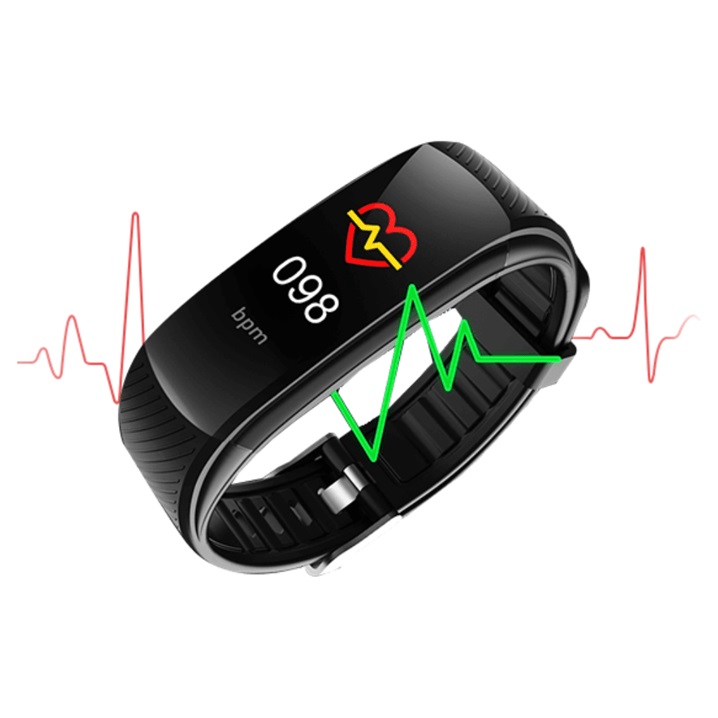
Vital Fit Track Reviews: I Tried This Fitness Tracker
As a retired, overweight gentleman in my golden years, I never thought I’d be excited about a fitness gadget. But here I am, absolutely thrilled to share my experience with the Vital Fit Track smartwatch. After years of neglecting my health and watching my waistline expand, I decided it was high time to take control of my fitness journey. That’s when I stumbled upon this nifty little device, and let me tell you, it’s been a game-changer for this old-timer.
From the moment I strapped the Vital Fit Track to my wrist, I felt a renewed sense of purpose. Its sleek design didn’t make me feel like I was wearing some clunky, high-tech gizmo that screamed “I’m trying to get in shape!” Instead, it looked stylish enough that I didn’t mind wearing it all day, every day.
What really impressed me was how easy it was to use, even for someone who still struggles with smartphones. The clear display and intuitive interface meant I could track my steps, heart rate, and even my sleep patterns without feeling like I needed my grandkids to explain it to me.
And let me tell you, seeing those numbers improve day by day has been incredibly motivating.
But the real magic of the Vital Fit Track? It’s made this old dog excited about learning new tricks when it comes to fitness. Whether I’m taking a brisk walk around the neighborhood or trying out some light weightlifting (who knew I’d ever say that?), this smartwatch has become my constant companion and cheerleader.
So, if you’re like me – no spring chicken but ready to take flight on a healthier path – stick around as I dive into the details of why the Vital Fit Track might just be the perfect fitness partner for us seasoned folks looking to shed a few pounds and add some pep to our step.
What is Vital Fit Track?
Vital Fit Track is an advanced fitness tracker and smartwatch designed to help users monitor their health and fitness metrics in real-time. This fashionable wearable device combines the functionality of a fitness tracker with the features of a smartwatch, offering a comprehensive solution for those looking to improve their overall wellness.
Key features of the Vital Fit Track include:
- Heart rate monitoring
- Blood pressure monitoring
- Blood oxygen level tracking
- Step counting
- Calorie tracking
- Distance measurement
- Sleep quality analysis
- Call and message notifications
- Weather updates
The device is equipped with smart sensors that allow for accurate measurement of vital health parameters, making it a valuable tool for maintaining and improving one’s health.
How Does It Work
Vital Fit Track utilizes advanced technology to provide users with accurate and real-time health and fitness data:
- Smart sensors: The device is equipped with precision sensors that continuously monitor various health metrics throughout the day.
- Data processing: An upgraded chip and improved algorithm process the collected data to provide accurate readings and insights.
- Bluetooth connectivity: Vital Fit Track uses Bluetooth 5.0 to connect with your smartphone, enabling seamless data synchronization and smart notifications.
- Mobile app integration: The device pairs with a dedicated mobile app, allowing users to view detailed health reports, set goals, and track progress over time2.
- Low power consumption: The advanced chip ensures efficient power usage, resulting in longer battery life and faster charging.
How to Use Vital Fit Track
Using the Vital Fit Track is straightforward and user-friendly:
- Charge the device: Ensure your Vital Fit Track is fully charged before first use.
- Download the app: Install the companion app on your smartphone. The app is available for both Android and iOS devices2.
- Pair the device: Turn on Bluetooth on your smartphone and follow the in-app instructions to pair your Vital Fit Track with your phone.
- Wear the device: Place the Vital Fit Track on your wrist, ensuring it’s snug but comfortable.
- Monitor your health: Throughout the day, the device will automatically track various health metrics. You can view real-time data directly on the device’s display.
- Check notifications: Receive call, text, and app notifications directly on your wrist.
- Review data: Open the companion app to view detailed health reports, set fitness goals, and track your progress over time2.
- Customize settings: Use the app to personalize your device settings, such as adjusting display brightness or setting up activity reminders.
- Regular charging: Charge your Vital Fit Track as needed to ensure continuous tracking and monitoring.
By following these steps, users can make the most of their Vital Fit Track, leveraging its advanced features to monitor and improve their health and fitness levels.
What I Like About Vital Fit Track
- Ease of Use: The interface is intuitive and easy to navigate, even for someone who’s not tech-savvy.
- Comprehensive Health Monitoring: It tracks heart rate, steps, sleep, and even blood pressure, providing a well-rounded view of my health.
- Motivational Features: The device gently nudges me to stay active with reminders and goal-setting options.
- Smart Notifications: I appreciate being able to receive calls and messages on my wrist without having to reach for my phone.
- Comfortable Design: The watch is lightweight and comfortable to wear all day, even during workouts.
- Battery Life: It lasts several days on a single charge, which is convenient for continuous tracking.
What I Don’t Like About Vital Fit Track
- Limited Display Size: The small screen can be a bit challenging to read for someone with aging eyes.
- Occasional Syncing Issues: Sometimes, the device takes a while to sync with the smartphone app.
- Basic App Interface: While functional, the app could benefit from a more modern design and additional features.
- Water Resistance Limitations: Although it is water-resistant, I wish it were fully waterproof for swimming sessions.
- Initial Setup: The initial pairing process was a bit tricky and could be streamlined for ease of use.
Is Vital Fit Track Legit?
Yes, from my experience, the Vital Fit Track stands out as a legitimate and reliable fitness tracker for several reasons. First and foremost, the accuracy of its health monitoring features is impressive. I have cross-checked its heart rate and step count with other devices, and it consistently delivers precise readings. This accuracy gives me confidence in the data it provides, which is crucial for someone like me who is serious about improving my health.
Moreover, the device’s build quality and design reflect a commitment to durability and user comfort. It feels sturdy on my wrist, and its sleek appearance makes it suitable for any occasion, whether I’m at the gym or attending a social gathering. The attention to detail in its construction assures me that it’s built to last.
Lastly, the positive impact it has had on my lifestyle is undeniable. Since using the Vital Fit Track, I’ve become more active and health-conscious, which has led to noticeable improvements in my overall well-being. The device’s ability to seamlessly integrate into my daily routine and encourage healthier habits is a testament to its effectiveness. For these reasons, I wholeheartedly believe that the Vital Fit Track is a legitimate tool for anyone looking to enhance their fitness journey. You can also read other Vital Fit Track reviews if you’re still in doubt.
Where to Buy Vital Fit Track
For those looking to buy the Vital Fit Track, the Vital Fit Track official store is the way to go. Purchasing directly from the official store guarantees that you are getting the genuine product, complete with the most recent updates and features. My transaction with the official store was smooth, with prompt delivery and excellent customer support.
Plus, the official store often provides special discounts and offers, making it a worthwhile option.

How Wilson Drugs & Pharmaceuticals Private Limited is a leading Ayurvedic medicine manufacturer.
Ayurvedic medicine is a beacon of ancient wisdom with contemporary relevance in a world increasingly drawn to natural and holistic healthcare solutions. Wilson Drugs & Pharmaceuticals Private Limited, a recognized Ayurvedic medicine manufacturer, is leading this return with a diverse range of quality Ayurvedic products to fulfill the growing demand for natural health solutions.
Wilson Drugs and Pharmaceuticals Private Limited’s Legacy
Established more than five decades ago, Wilson Drugs & Pharmaceuticals Private Limited has developed a history anchored in the Ayurvedic ancient Indian system of medicine stressing equilibrium between the mind, body, and spirit. Leading brand in the Ayurvedic medicine production sector the organization is known for quality, authenticity, and inventiveness.
Wilson Drugs takes great satisfaction in maintaining Ayurvedic traditional values while adding contemporary production processes. This combination of technology and history guarantees that the goods of the firm satisfy the high quality criteria demanded by modern customers as well as be efficient.
Why Is Wilson Drugs Different as an Ayurvedic Medicine Manufacturer?
Wilson Drugs & Pharmaceuticals Private Limited sets itself out in the Ayurvedic medicine market by means of numerous important criteria:
Any Ayurvedic therapy is based on the quality of its components. Sustainable techniques and excellent sources are therefore important concepts in any Ayurvedic therapy. Wilson Drugs obtains its raw materials from the exquisite environs of Himachal Pradesh, where herbs and plants are grown organically, free of synthetic fertilizers and pesticides. The company ensures that its products are not just efficient but also environmentally beneficial via its commitment to ethical and sustainable sourcing procedures.
Modern Manufacturing Facilities State-of- the-art Wilson Drugs is a forward-looking business investing in the newest production technology, while it is firmly anchored in custom. Modern equipment at the company’s state-of-the-art facilities follows Good Manufacturing Practices (GMP). This guarantees that every item is produced under regulated circumstances, therefore preserving the best standards of quality and cleanliness.
Only the highest quality products will be supplied to customers by Wilson Drugs & Pharmaceuticals Private Limited. The company follows a rigorous quality control approach from the selection of raw materials all the way through the production process. Thorough testing is conducted on all products to ensure they meet the high standards of safety, effectiveness, and purity set by the firm.
Research and Development: Wilson Drugs runs its business mostly on innovation. A committed research and development staff inside the organization works nonstop to produce fresh formulas and enhance current items. Wilson Drugs creates goods that are both traditional and creative by merging current scientific research with Ayurvedic knowledge, therefore satisfying the demands of modern customers.
The Product Range: Meeting Various Health Needs
Designed to handle a range of health issues, Wilson Drugs & Pharmaceuticals Private Limited provides a great array of Ayurvedic goods. The product line of the corporation consists in:
Based on ancient Ayurvedic writings, these time-tested compositions constitute classical Ayurvedic medicines. They include items for common conditions like joint discomfort, lung problems, and digestive difficulties.
Wilson Drugs has created original Ayurvedic formulations combining the advantages of many herbs and natural components. These items are meant to provide complete health treatments, therefore treating the underlying causes of different health problems as well as the symptoms.
Wilson Drugs provides a selection of Ayurvedic skincare, haircare, and oral care items in response to the expanding need for natural and herbal personal care goods. These safe for everyday use items are devoid of dangerous chemicals and composed of natural components.
Wilson Drugs also produces Ayurvedic dietary supplements designed to preserve general health and well-being. Made from strong herbs, these supplements are meant to help the body run as it should.
Why Would You Want Wilson Drugs to be Your Ayurvedic Medicine Manufacturer?
Whether your role is retailer, distributor, or healthcare provider, working with Wilson Drugs & Pharmaceuticals Private Limited has several advantages.
Having more than 50 years of expertise, Wilson Drugs has developed a name in the Ayurvedic medicine field for quality. Both customers and partners have come to trust the organization as it is committed to quality and client satisfaction.
Wilson Drugs is aware that every company has particular requirements. Custom manufacturing solutions are thus Custom manufacturing solutions provided by the firm let partners create private label items fit for their particular market needs. Wilson Drugs can fulfill your demands whether your requirements call for a small batch of a certain formulation or mass manufacturing.
Wilson Drugs is firmly anchored in the rich legacy of Indian Ayurveda, while its vision spans continents. The firm markets its goods abroad, therefore introducing Ayurveda’s advantages to a worldwide audience. Choosing Wilson Drugs means you are working with a business that blends local knowledge with a worldwide perspective.
Wilson Drugs & Pharmaceuticals Private Limited is ethically sound. Due to its commitment to transparency, the company ensures that partners are fully informed and involved in manufacturing.
Medical Future of Ayurveda Wilson Drugs incorporation
Wilson Drugs & Pharmaceuticals Private Limited will dominate the Ayurvedic medicine business as demand for natural and holistic health solutions rises. The organization leads this burgeoning sector with its commitment to innovation, originality, and customer happiness.
Wilson Drugs & Pharmaceuticals Private Limited is the ideal partner to help you increase your present goods or start a new Ayurvedic line. Wilson Drugs’ Ayurvedic knowledge, manufacturing capability, and quality make it the Ayurvedic drug company to trust.
In conclusion
Wilson Drugs & Pharmaceuticals Private Limited is a testament to Ayurveda’s importance in modern healthcare. The leading Ayurvedic medicine company embraces contemporary technology and innovation while upholding its ancient beliefs. Companies seeking a reliable Ayurvedic medicine partner may trust Wilson Drugs’ expertise, quality, and dedication. Come join Wilson Drugs & Pharmaceuticals Private Limited in the Ayurvedic revolution and provide natural health solutions worldwide.

Maintaining a Positive Mindset With a Mesothelioma Diagnosis
The Power of Positive Thinking
A mesothelioma diagnosis can be overwhelming, but keeping a positive mindset is crucial. Maintaining a positive mentality can help patients cope better with treatments and improve their overall well-being. Positive thinking can reduce stress and boost the immune system, making it easier to handle the challenges ahead.
Sharing Common Experiences
Connecting with others who are going through similar experiences can be incredibly comforting. Sharing thoughts and feelings with a support group can help lessen feelings of loneliness. Receiving social support from others who understand what you’re going through can make a big difference in your mental health.
Setting Realistic Goals
Setting achievable goals can provide a sense of purpose and direction. These goals don’t have to be big; even small, daily objectives can help. By focusing on what you can control, you can maintain a sense of accomplishment and keep a positive outlook on life.
Managing Stress Effectively
When dealing with a mesothelioma diagnosis, managing stress is crucial for both patients and their families. Here are some strategies to help cope with the stress effectively.
Incorporating Mindfulness Practices
Mindfulness practices, such as meditation and deep breathing exercises, can significantly reduce stress. These practices help in focusing the mind and calming the body. Research shows that meditation can lessen anxiety and improve overall quality of life. Patients can also explore yoga or tai chi, which combine gentle physical activity with mindfulness.
Engaging in Physical Activities
Physical activities are essential for maintaining both physical and mental health. Gentle exercises like walking, stretching, or light yoga can help reduce stress and improve mood. Oncologists recommend these activities because they can lessen treatment side effects and enhance physical function. Even a simple 30-minute walk can make a big difference.
Creating a Relaxing Environment
Creating a relaxing environment at home can also help manage stress. This can include setting up a quiet space for relaxation, using calming scents like lavender, or playing soft music. It’s important to have a place where one can unwind and feel at peace. Talking about your concerns with family members or friends in this relaxing space can also be very beneficial.
Building Strong Support Networks
Finding Support Groups
Joining mesothelioma support groups can be a lifeline for patients and their families. These groups offer a space to share experiences, gain insights, and find comfort in knowing you’re not alone. Many organizations provide both online and in-person support groups. For instance, the Mesothelioma Center hosts a monthly support group led by a licensed mental health counselor. Online communities like Daily Strength and I Had Cancer also offer platforms for connection and support.
Leaning on Family and Friends
Family and friends are often the first line of support. They can help with daily tasks, provide emotional support, and be there during medical appointments. It’s important to communicate openly with them about your needs and feelings. Don’t hesitate to ask for help; a strong support system can make a significant difference during this challenging time.
Utilizing Professional Counseling
Professional counseling can be incredibly beneficial for both patients and caregivers. Therapists who specialize in cancer support, particularly those familiar with mesothelioma, can offer targeted guidance and coping strategies. In addition to individual therapy, consider joining mesothelioma support groups for peer-to-peer support. These groups can provide a sense of community and shared understanding that is invaluable during difficult times.
Addressing Depression and Anxiety
Recognizing Symptoms Early
Depression and anxiety are common among mesothelioma patients. Recognizing symptoms early can make a big difference. Look for signs like constant sadness, loss of interest in activities, and changes in sleep or appetite. Anxiety might show up as constant worry, restlessness, or trouble concentrating. Early detection can lead to better outcomes.
Seeking Professional Help
If symptoms persist, it’s crucial to seek professional help. Mental health professionals can offer counseling and medication to help manage these conditions. Counseling and support groups are among the most effective options. Many cancer centers provide free counseling services tailored to the unique needs of cancer patients.
Exploring Therapeutic Techniques
There are various therapeutic techniques that can help. Cognitive-behavioral therapy (CBT) is one effective method. It helps patients change negative thought patterns. Other techniques include mindfulness practices and relaxation exercises. These methods can improve mental well-being and help patients cope better with their diagnosis.
Addressing mental health is vital for mesothelioma patients. It has been shown that patients with anxiety and depression are less likely to adhere to treatment and have a poorer prognosis. Early recognition and professional help can make a significant difference in their quality of life.
Nutritional Strategies for Mesothelioma Patients
Creating a Food Journal
One of the most important steps for mesothelioma patients is to create a food journal. This helps track what you eat and how it makes you feel. Keeping a record of your meals can help you understand which foods give you energy and which ones don’t. This is especially important because treatment-related symptoms can affect your appetite and digestion.
Understanding Nutritional Needs
It’s crucial to understand your nutritional needs during treatment. Eating the right foods can help you maintain strength and healthy body tissue. If your treatment causes digestive problems like constipation, you should eat more fiber. Plant-based foods like oatmeal, bran, vegetables, and fruits can be very helpful.
Consulting with a Nutritionist
Talking to a nutritionist can provide personalized advice tailored to your needs. They can help you create a balanced diet plan that supports your treatment and overall well-being. A nutritionist can also help you find foods that are easier to digest and more enjoyable to eat, making mealtime less of a chore and more of a pleasure.
Exploring Clinical Trials and New Treatments
Benefits of Clinical Trials
Participating in clinical trials can offer new mesothelioma treatments and research that might not be available otherwise. These trials often provide access to cutting-edge therapies and medications. For instance, the CheckMate 743 trial combined Opidivo and Yervoy, which helped slow down tumor growth by boosting the body’s T-cell function. This can give patients hope and a sense of security.
Finding Suitable Trials
Finding the right clinical trial can be challenging. Patients should talk to their doctors and patient advocates to get detailed information. They can help identify trials that match the patient’s specific condition and needs. It’s important to consider the trial’s location, duration, and the type of treatments involved.
Discussing Options with Your Doctor
Before joining a clinical trial, it’s crucial to discuss all options with your doctor. They can provide insights into the potential benefits and risks. Understanding the trial’s goals and how it fits into your overall treatment plan is essential. This conversation can help you make an informed decision about participating in a trial.
End-of-Life Support and Planning
Facing the end-of-life stage can be overwhelming for mesothelioma patients and their families. Proper planning can help ease the emotional burden and ensure that the patient’s wishes are respected. Here are some key areas to consider:
Understanding Palliative Care
Palliative care focuses on providing relief from the symptoms and stress of the illness. It aims to improve the quality of life for both the patient and the family. Radiation can help manage pain and other symptoms, such as shortness of breath and chest pain. It’s important to discuss palliative care options with your healthcare provider to tailor a plan that meets your needs.
Making Legal and Financial Arrangements
Ensuring that all legal and financial matters are in order can provide peace of mind. Consider the following steps:
- Ensuring the living will and trusts are set up to allocate properties and assets correctly.
- Establishing a power of attorney to make decisions on behalf of the patient when they are no longer able to do so.
- Discussing and setting up a do-not-resuscitate (DNR) order if desired.
- Planning for funeral arrangements to respect the patient’s wishes.
Providing Emotional Support to Loved Ones
The emotional toll of end-of-life planning can be significant. It’s crucial to offer emotional support to family members and caregivers. Reading about what is to come can help prepare everyone involved. Support groups and counseling services can also provide much-needed comfort and guidance during this challenging time.
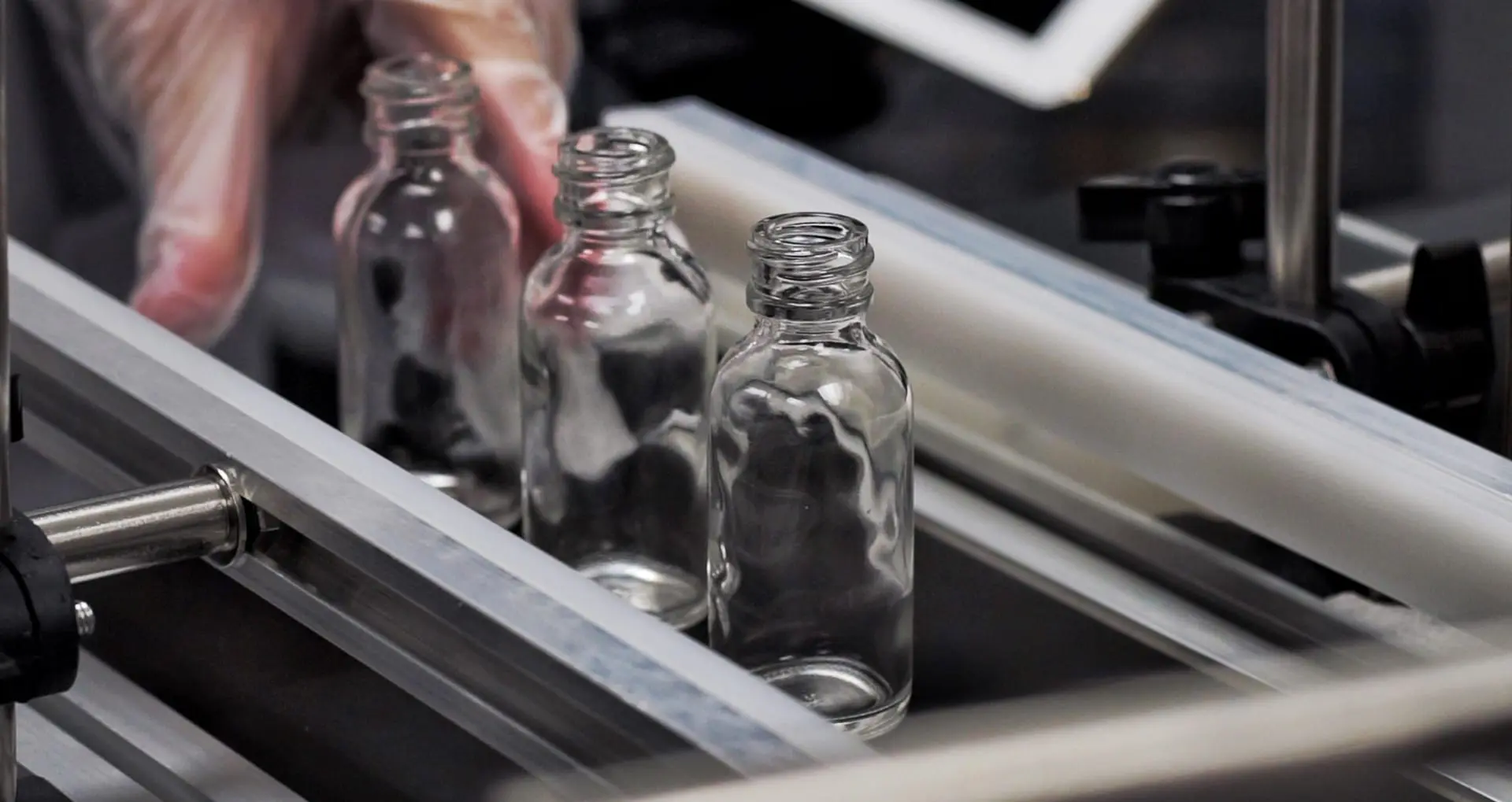
Why Bellus Labs is the Perfect Partner for Private Label Startups
Starting a new business is thrilling, but it can also be overwhelming. One of the key decisions you’ll need to make is choosing the right partner to help bring your vision to life. If you’re looking to launch with private label products, Bellus Labs is the perfect choice for startups. Here’s why.
Expertise and Innovation
Bellus Labs is a leader in the private label products industry because of their deep expertise and commitment to innovation. With years of experience, they know what it takes to create high-quality products that customers love. Their team of scientists and industry experts is always working on new formulations, ensuring that your product line stays ahead of the trends. This dedication to innovation gives your brand a competitive edge.
Wide Range of Products
Bellus Labs offers an impressive variety of private label products. Whether you’re interested in skincare, haircare, wellness supplements, or another niche, they have you covered. You can choose from their proven formulas or work with their team to create a custom product that fits your brand’s unique identity. This flexibility is crucial for startups looking to stand out in the market.
Top-Notch Quality
Quality is essential for private label products, and Bellus Labs excels in this area. They follow the highest industry standards and use advanced manufacturing processes to ensure every product meets strict quality criteria. From sourcing premium ingredients to rigorous testing, Bellus Labs guarantees your products are safe, effective, and of the highest quality. This focus on quality helps build trust and loyalty with your customers, which is vital for any new brand.
Customization and Branding
A great product needs great branding. Bellus Labs offers extensive customization options, allowing you to design everything from the product formula to the packaging. Their in-house design team can help create a cohesive brand identity that reflects your vision and appeals to your target audience. This support is particularly helpful for startups that may not have much experience with branding and marketing.
Cost-Effective Solutions
Startups often have tight budgets, and Bellus Labs understands this. They offer cost-effective solutions without compromising on quality. By providing scalable production options, they can handle both small and large orders, allowing you to grow at your own pace.
This flexibility ensures you can manage your budget while delivering top-notch private label products to your customers.
Regulatory Compliance
Navigating regulatory compliance can be tricky, but Bellus Labs has it covered. They ensure all their products meet industry regulations, including ingredient safety and labeling requirements. Their expertise in this area means you can rest easy knowing your products are legally sound and ready for market.
Exceptional Customer Support
Launching a new product line can be challenging, but Bellus Labs is there to help every step of the way. Their dedicated customer support team is always available to answer questions, provide guidance, and address any concerns. This personalized support is invaluable for startups navigating the complexities of product development and market entry.
Proven Track Record
Bellus Labs has a proven track record of helping startups succeed with private label products. They have helped numerous brands thrive in the market, thanks to their expertise and support. This history of success shows you’re partnering with a company that knows how to deliver results.
Conclusion
Choosing the right partner for your private label products is crucial for your startup’s success. Bellus Labs offers a winning combination of expertise, innovation, high-quality standards, customization options, cost-effective solutions, regulatory compliance, and exceptional customer support. This makes them the best choice for any startup looking to make a mark in the industry. Let Bellus Labs help you bring your vision to life and set your brand on the path to success.

Vapes in Ireland: A Full Understanding About Vaping
Vaping has become an increasingly popular alternative to traditional smoking worldwide, and Ireland is no exception. With a growing number of people turning to e-cigarettes and vape products, it’s important to understand the landscape of vaping in Ireland. This guide explores the current state of the vaping market, regulations, health considerations, and tips for those new to vaping.
The Rise of Vaping in Ireland
Market Growth
Over the past decade, the vaping industry in Ireland has seen significant growth. According to recent statistics, the number of vapers in Ireland has risen steadily, with more individuals choosing vaping as a less harmful alternative to smoking. This surge is driven by several factors, including increased awareness of the health risks associated with traditional cigarettes and the availability of diverse vaping products.
Popularity Among Different Age Groups
Vaping has gained popularity across various age groups in Ireland. While it initially attracted younger demographics, such as those in their 20s and 30s, older smokers seeking a safer alternative have also embraced vaping. The accessibility of vape shops and online platforms like e-shop.ie has made it easier for people of all ages to explore vaping options.
Understanding Vape Products
Types of Vapes
There are several types of vapes available in the Irish market, catering to different preferences and needs:
- E-Cigarettes: These are the most basic form of vapes, resembling traditional cigarettes. They are user-friendly and often preferred by beginners.
- Vape Pens: Slightly larger than e-cigarettes, vape pens offer more customization options and longer battery life.
- Pod Systems: Compact and easy to use, pod systems are popular for their convenience and portability. They use pre-filled or refillable pods.
- Box Mods: These are advanced devices that allow users to adjust power settings and customize their vaping experience. They are suitable for experienced vapers.
- Disposable Vapes: Convenient and ready to use right out of the box, disposable vapes are ideal for those looking for a hassle-free experience.
E-Liquids and Flavors
E-liquids, also known as vape juices, are a crucial component of the vaping experience. They come in a variety of flavors, nicotine strengths, and VG/PG ratios. Some popular e-liquid flavors in Ireland include:
- Tobacco: A classic choice for those transitioning from traditional cigarettes.
- Menthol: Refreshing and cool, menthol is another popular option.
- Fruits: Flavors like strawberry, mango, and blueberry are favorites among vapers.
- Desserts: For those with a sweet tooth, options like vanilla custard and caramel are available.
- Beverages: Coffee, cola, and other beverage-inspired flavors offer a unique vaping experience.
Health and Safety Considerations
The Health Debate
The health implications of vaping have been a topic of debate among health professionals and researchers. While vaping is generally considered less harmful than smoking, it’s not without risks. Some key points to consider include:
- Reduced Harm: Vaping eliminates the combustion process, which significantly reduces the number of harmful chemicals inhaled compared to traditional cigarettes.
- Nicotine Addiction: Vaping can still lead to nicotine addiction, particularly among young people.
- Long-Term Effects: The long-term health effects of vaping are still being studied, and caution is advised.
Regulatory Landscape
Ireland has implemented regulations to ensure the safety and quality of vaping products. Key regulations include:
- Age Restrictions: Sale of vaping products is prohibited to individuals under 18.
- Product Standards: E-liquids and devices must meet specific safety standards.
- Advertising Restrictions: Advertising of vaping products is restricted to prevent targeting minors.
- Public Use: Vaping is banned in certain public places, similar to smoking regulations.
Tips for New Vapers
Choosing the Right Device
For those new to vaping, selecting the right device is crucial. Beginners may find e-cigarettes or vape pens more suitable due to their simplicity. It’s advisable to start with a basic device and gradually explore more advanced options as you become familiar with vaping.
Understanding Nicotine Levels
Nicotine strength in e-liquids varies, and choosing the right level is important to ensure a satisfying experience without excessive intake. For those transitioning from smoking, starting with a higher nicotine level and gradually reducing it can help manage cravings.
Maintaining Your Device
Proper maintenance of your vape device ensures longevity and optimal performance. Regularly clean the tank, replace coils as needed, and charge the battery correctly. This not only enhances the vaping experience but also ensures safety.
The Social Aspect of Vaping
Vaping Communities
Vaping has fostered a sense of community among users. In Ireland, various online forums, social media groups, and local meet-ups provide platforms for vapers to share experiences, tips, and product recommendations. These communities offer support, especially for those new to vaping.
Vaping Etiquette
Understanding vaping etiquette is essential to ensure a positive experience for everyone. Some basic guidelines include:
- Respecting Non-Vapers: Avoid vaping in non-smoking areas and be mindful of others’ preferences.
- Disposing of Products Properly: Dispose of disposable vapes and used coils responsibly.
- Being Informed: Stay updated on local regulations and changes in vaping laws.
The Future of Vaping in Ireland
Technological Advancements
The vaping industry continues to evolve with technological advancements. Innovations such as temperature control, improved battery life, and new flavor formulations enhance the vaping experience. As the industry grows, consumers can expect more cutting-edge products.
Regulatory Changes
The regulatory landscape for vaping in Ireland may continue to change as more research becomes available. Staying informed about these changes is crucial for both consumers and businesses. Compliance with regulations ensures the safety and quality of vaping products.
Public Perception
Public perception of vaping is gradually shifting. As more people become aware of the benefits of vaping over smoking, the stigma associated with vaping is decreasing. Continued education and awareness campaigns can further improve public perception.
Conclusion
Vaping in Ireland has seen remarkable growth, offering a viable alternative for smokers looking to quit or reduce their tobacco consumption. With a wide range of products, flavors, and community support, the vaping experience is accessible and customizable. However, it’s important to stay informed about health considerations and regulatory changes to ensure a safe and enjoyable vaping journey. Whether you’re a seasoned vaper or just starting, Ireland’s vibrant vaping community and diverse product offerings provide something for everyone.

Exploring the Top Kratom Vendors: Where to Buy Quality Kratom with Confidence
The kratom market is filled with various vendors, each claiming to offer the best products. With so many options, finding a reliable source for high-quality kratom can be challenging. To help you navigate this marketplace, we’ve highlighted some of the top kratom vendors known for their quality, transparency, and customer satisfaction. Here’s a guide to exploring these top vendors and making confident purchases.
1. Kratom Spot
Kratom Spot stands out as a reputable vendor renowned for its high standards and diverse product range. They offer a wide variety of kratom strains, including red, green, and white veins, as well as unique blends. What sets Kratom Spot apart is their commitment to quality control and transparency. They provide third-party lab test results for all their products, ensuring that each batch is free from contaminants and accurately labeled. Their website is user-friendly, making it easy to find and order products, and they offer excellent customer service, including a satisfaction guarantee.
2. Happy Hippo Herbals
Happy Hippo Herbals is celebrated for its extensive selection and high-quality kratom. This vendor is known for its innovative strains and blends designed to meet a variety of user needs, from energy and focus to relaxation and pain relief. Happy Hippo Herbals emphasizes customer education by offering detailed product descriptions and dosage recommendations. Their kratom is rigorously tested for purity and potency, and they are transparent about their sourcing and processing practices. With responsive customer service and fast shipping, Happy Hippo Herbals is a reliable choice for kratom enthusiasts.
3. MIT45
MIT45 has earned a reputation for its potent and effective kratom products, especially their extracts and capsules. They are known for their rigorous quality control processes and transparency. MIT45’s best kratom brands are lab-tested to ensure they meet high purity and potency standards. The brand provides detailed information about their extraction methods and sourcing practices, which reflects their commitment to quality. MIT45’s user-friendly website, along with their dedication to customer satisfaction, makes them a top choice for those seeking high-quality kratom extracts.
4. Kratom King
Kratom King is a well-regarded vendor known for its reliability and wide product range. They offer a variety of kratom strains and products, including powders and capsules. Kratom King is praised for its transparent business practices, including clear information on sourcing and processing. They provide third-party lab test results for their products, ensuring quality and safety. Competitive pricing, bulk purchase options, and responsive customer service further enhance their appeal. Kratom King’s reputation for consistency and quality makes it a solid choice for kratom buyers.
5. The Golden Monk
The Golden Monk is recognized for its premium kratom products and exceptional customer service. This vendor offers a selection of high-quality kratom powders and capsules, all of which undergo thorough lab testing to ensure purity and potency. The Golden Monk provides detailed product descriptions and dosage guidelines, helping users make informed choices. They are known for their generous return policy and responsive support team. Their commitment to quality and customer satisfaction, combined with a user-friendly shopping experience, makes The Golden Monk a top vendor in the kratom market.
Tips for Buying Kratom with Confidence
- Check for Lab Testing: Always verify that the vendor provides third-party lab test results. This ensures that the kratom is free from contaminants and accurately labeled.
- Read Customer Reviews: Look for reviews and testimonials from other users to gauge the vendor’s reliability and product quality.
- Evaluate Product Variety: Choose a vendor that offers a wide range of kratom strains and products to find what best suits your needs.
- Assess Customer Service: Good customer service is crucial. Look for vendors with responsive support teams and clear return policies.
- Review Pricing and Shipping: Compare prices and check shipping options. Reliable vendors offer transparent pricing and efficient shipping practices.
Conclusion
Finding the right kratom vendor involves evaluating factors such as product quality, transparency, and customer service. The top kratom vendors—Kratom Spot, Happy Hippo Herbals, MIT45, Kratom King, and The Golden Monk—are known for their commitment to providing high-quality kratom products and exceptional customer support. By considering these vendors and following the tips provided, you can confidently select a reliable source for your kratom needs and enjoy a positive purchasing experience.
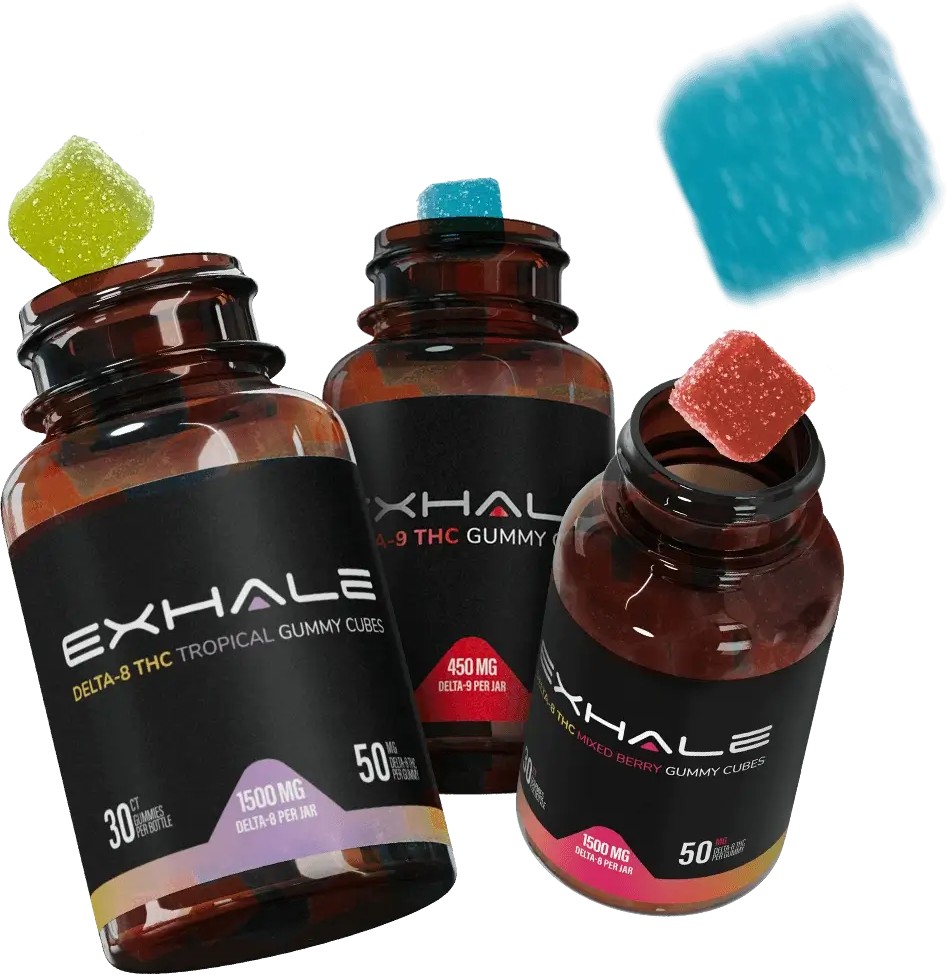
Exhale Premium Hemp: Elevating Your Wellness Routine
Exhale Premium Hemp is a brand that is dedicated to providing high-quality hemp products to elevate your wellness routine. Their mission is to promote overall health and well-being through the use of natural, plant-based remedies. With a focus on sustainability and transparency, Exhale Premium Hemp ensures that their products are made with the highest quality ingredients and are free from harmful chemicals.
One of the key benefits of using hemp products is their ability to support relaxation and stress relief. Hemp contains compounds known as cannabinoids, which interact with the body’s endocannabinoid system to promote feelings of calmness and relaxation. By incorporating hemp into your wellness routine, you can experience a sense of balance and tranquility in both mind and body.
Exhale Premium Hemp offers a range of products designed to help you incorporate hemp into your daily routine. From tinctures and capsules to topicals and edibles, there is something for everyone at Exhale Premium Hemp. Their products are made with organic hemp grown in the United States, ensuring that you receive only the highest quality ingredients in every product.
In addition to promoting relaxation, hemp can also support overall physical wellness. The anti-inflammatory properties of hemp make it an ideal supplement for those dealing with chronic pain or inflammation. Whether you suffer from arthritis, muscle soreness, or other inflammatory conditions, incorporating hemp into your wellness routine can help reduce pain and improve mobility.
Exhale Premium Hemp takes pride in offering products that are safe, effective, and sustainable. They prioritize transparency by providing third-party lab testing results for all of their products, so you can feel confident knowing exactly what you’re putting into your body. Additionally, Exhale Premium Hemp sources their hemp from farms that use organic farming practices, ensuring that their products are free from pesticides and other harmful chemicals.
When it comes to elevating your exhale wellness near me Premium Hemp has everything you need to support your health goals naturally. Whether you’re looking for stress relief, pain management, or overall well-being enhancement, Exhale Premium Hemp has a product that can help you achieve your desired outcomes.
In conclusion, Exhale Premium Hemp is committed to helping individuals improve their overall health and well-being through the use of high-quality hemp products. With a focus on sustainability and transparency, Exhale Premium Hemp provides safe and effective solutions for those looking to enhance their wellness routines naturally. By incorporating their premium products into your daily regimen, you can experience the many benefits of this powerful plant while supporting your health goals in a holistic way. Choose ExhalePremiumHemp.com today and start elevating your wellness routine with premium quality CBDproducts!


